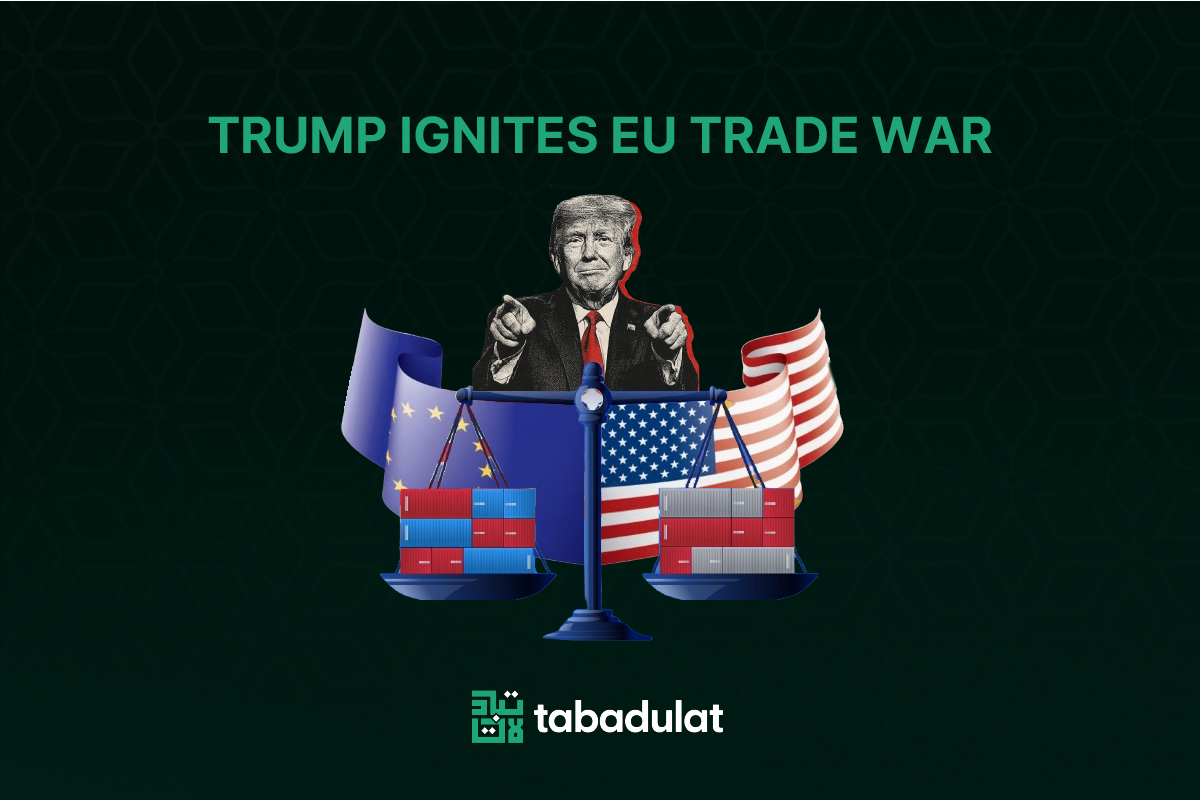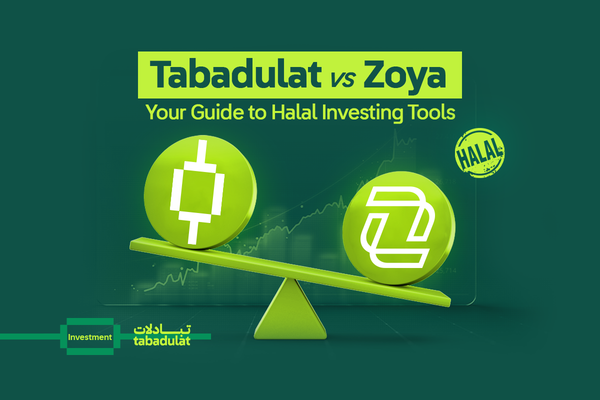Trump Ignites Trade War with 30% Tariffs as Europe Prepares to Respond
Trump has imposed a 30% tariff on EU imports, escalating US-EU trade tensions. As Brussels prepares countermeasures, markets react and fears of a global trade war grow. Find out what this means for tariffs, negotiations, and your portfolio.

U.S. President Donald Trump EU tariffs announcement has reignited global trade tensions by imposing a 30% tariff on European imports, fueling concerns about a potential US EU tariffs escalation. This move triggered immediate concern across Europe, with the EU tariffs on US goods becoming a likely scenario as the EU prepares countermeasures.
Economists warn that this decision could create more uncertainty in the markets. It may disrupt global supply chains and add pressure to a weak world economy.
What Did Trump Say to Europe?
Trump published a series of posts on his platform "Truth Social" declaring the new Trump EU tariffs at 30% on EU imports.
He claimed the higher tariffs aim to correct what he described as a “large and persistent trade deficit” between the two sides.
In an official message addressed to European Commission President Ursula von der Leyen, Trump stated that the trade relationship with Europe is “not reciprocal” because of EU‑imposed tariffs, policies, and non‑tariff barriers. He added that the new U.S. tariffs are “far lower than what is needed to close the gap.”
In addition, after announcing the 30% tariffs, Trump threatened that EU tariffs could go even higher if Brussels retaliates. He warned that if the European governments act and impose higher tariffs on imports from the EU, these EU tariffs on American goods will lead to more duties. This could turn the dispute into a full trade war.
It is worth noting that Trump agreed to delay EU tariffs last May until July 9 after threatening to impose 50% duties on European imports. The move came when the European Commission requested more time to “reach a good deal,” resulting in EU tariffs being delayed by Trump.
Markets quickly reacted, with headlines highlighting a stock futures surge in the after Trump's delay as traders priced in lower escalation risk. That precedent is important now. They have an August 1 deadline for the new 30% tariffs. Investors are watching closely for another possible delay.
Will the EU Respond?
As tensions rise, EU Trade Commissioner Maroš Šefčovič said the bloc is close to reaching an agreement on a mutually beneficial trade agreement with the U.S., emphasizing that cooperation among EU countries is key to avoiding a full-scale trade war.
He added that current negotiations seem promising, but also issued a serious warning: the 30% tariffs proposed by Trump “could practically destroy trade” between the two sides.
Italian Foreign Minister Antonio Tajani said the EU has a list of American goods. This list is worth €21 billion, or about $24.5 billion. These goods will face tariffs if no deal is made. Tajani warned that there could be a second round of duties if talks fail. He stressed that “tariffs hurt everyone, even the U.S. itself.”
He noted that any decline in stock markets could directly impact American savings and retirement funds. Tajani also stressed the importance of aiming for “zero tariffs” and open markets between North America and Europe.
He also urged the European Central Bank to think about more support tools. These could include quantitative easing and cutting interest rates. This would help protect the eurozone economy from the effects of the trade dispute.
Meanwhile, the EU members have suggested lowering tariffs on US cars. This aims to resolve the trade deadlock with the Trump administration. The Financial Times reports that Brussels will remove the 10% tariff on U.S. cars. This will happen if Washington lowers its tariffs to below 20%. These trade talks signal that EU tariffs on American cars could become central bargaining chips in ongoing talks.
Markets React as Uncertainty Grows
On Monday, July 21, the market opened after Trump announced a 30% tariff on the EU. The euro was near three-week lows. The U.S. dollar rose as investors moved into safer currencies.
Experts believe that what we’re seeing now is not just a trade disagreement between Washington and Brussels; it’s a clear signal of rising protectionism among the world’s largest economies. However, early market screens showed a reaction similar to the last delay.
What’s at Stake?
The risks extend beyond reduced transatlantic trade. There are bigger worries: market ups and downs, higher costs for consumers, and slower growth for exporters. This is happening while the world is already facing high inflation.
Trump’s warning of more tariffs in response to EU tariffs on US adds to the uncertainty, leaving policymakers and investors facing a highly unpredictable landscape that may delay economic recovery.
The International Monetary Fund (IMF) has already warned about rising global trade uncertainty, stating that it’s closely monitoring the developments linked to Trump EU tariffs 2025, which are planned to start on August 1.
The IMF also cut its global growth forecast for 2025 to 2.8%, down from 3.3% in its April World Economic Outlook.
Amid this escalation, a key question remains:
Will the dispute turn into a long term full‑scale trade war despite the ongoing efforts of EU trade ministers? Or can the current trade negotiations bring it under control before it spreads further?
The international community watches closely, while markets remain on edge amid rising uncertainty.
Update 29 July 2025
From Brink to Breakthrough: US-EU Trade Deal Sends Markets Soaring
Just days before a new wave of U.S. tariffs was set to hit European goods, Washington and Brussels reached a last-minute deal that could reshape transatlantic trade and calm market fears. The agreement not only defuses months of rising tensions but also lays the groundwork for $750 billion in strategic investments that aim to reduce dependency on China and deepen U.S.-EU ties.
Investors cheered the news, sending both U.S. and European stocks higher, while companies from energy to aerospace welcomed the clarity after months of uncertainty.
What’s in the Deal?
Under the agreement, the European Union has accepted a 15% tariff on a wide range of its exports to the United States, a significant climbdown from the 30% that Washington had initially threatened to take effect on August 1. While still higher than the UK’s 10% rate, this is considered a partial win for Brussels, especially since EU carmakers will now face a 15% import tax instead of the harsher 25% global tariff imposed in April.
On the other side of the deal, the EU has committed to opening its markets to American exports at zero tariffs, giving U.S. businesses broader access to European consumers. However, EU steel and aluminium will continue to be taxed at a steep 50% rate when entering the American market.
Beyond tariffs, the deal includes European pledges to boost investment in the U.S. by $600 billion, purchase $750 billion worth of American energy products, and significantly increase arms imports. For the Trump administration, this is expected to generate around $90 billion in tariff revenues annually and is being heralded as a major geopolitical and economic win.
Why Did the US Threaten New Tariffs?
The Trump administration accused the EU of protecting its internal market through regulatory hurdles and unfair tariffs, especially in sectors like medical technology, energy, and agriculture. U.S. officials argued that American products faced discriminatory treatment in Europe, blocking fair access for exporters.
The White House said the planned tariff hikes were meant to pressure Brussels to eliminate long-standing barriers and were part of a broader push to “rebalance” trade relationships with allies after years of deficit accumulation.
Markets React: Stocks Surge on Trade Relief
As soon as President Trump and European Commission President Ursula von der Leyen confirmed the deal on July 27, financial markets responded positively. U.S. stock index futures jumped sharply, with S&P 500 e‑minis up 0.3% and Nasdaq futures rising 0.4%, reflecting quick investor relief that the threatened 30% tariffs had been reduced to 15%.
Across the Atlantic, the tone was equally upbeat. Major European equity futures rallied, with Germany’s DAX and the EuroSTOXX 50 futures climbing over 0.9%, while the U.K.’s FTSE 100 futures rose 0.56%.
Analysts interpreted the move as a revival of confidence in easing trade tensions, which had previously weighed on markets throughout the summer. The deal removed "that risk of a huge tariff and potentially getting towards trade embargo levels", especially for European exports that had been under threat.
At the company level, stocks with direct exposure to tariff risks saw meaningful gains. Philips in Amsterdam rose 4–5% after lowering its projected tariff impact by €100 million. Aerospace giants Airbus and Safran climbed nearly 2%, buoyed by exemptions on tariffs for aircraft components
What’s Next? Focus Shifts to Mexico
The transatlantic agreement still requires formal ratification by the U.S. Congress and European Parliament, but both sides expect a smooth path forward. Officials say the deal could become a model for future trade partnerships with other democratic economies.
Meanwhile, the biggest trade deals still up in the air involve the U.S.’s top three partners: Mexico, Canada, and China. With President Trump actively pursuing agreements, the next dayscould bring more encouraging signs for the global economy.
For the third time in three months, U.S. and Chinese officials are back at the negotiating table. Hopes are rising that both sides will agree to pause additional tariffs for another 90 days.
However, unlike other U.S. trade partners, China has taken a tougher stance. If these talks fall apart, global trade could still face significant turbulence in the coming months.
Trump Starts Another Trade War..... This time it's 30% on the EU.
FAQs
What are the tariffs imposed by Trump?
President Trump announced new tariffs. These include 30% on most EU and Mexican goods. Other trading partners face 20-50% duties if new deals aren't reached. Existing tariffs on steel, aluminum, and autos also persist, aiming to address trade imbalances.
When do Trump EU tariffs start?
US President Donald Trump announced that 30% tariffs on goods imported from the European Union will begin on August 1, 2025.
Why Trump tariffs EU?
The primary reasons cited are long-standing trade imbalances and non-reciprocal trade policies, which he views as unfair to the United States.
Does the EU have a free trade zone?
The EU is a single market and customs union, enabling free movement of goods, services, capital, and people among members. It's more than a free trade zone.
Which countries are tariff-free?
Many countries have tariff-free trade within specific agreements or blocs, like the 27 EU member states in their Single Market. Others achieve tariff-free access via numerous Free Trade Agreements (FTAs) with partners like the US, Canada, or Japan, or through programs for Least Developed Countries.




